Multiskip cylindrical: Notch: results obtained with the cylindrical specimen
Summary
The simulations presented in this section were performed using the attenuation coefficient determined for the flat mock-up: 0.045 dB / mm
Comparaison of Bscans, echodynamic curves and Ascans
The figure below shows the experimental and simulated Bscans when the incidence angle of the transducer is 16°.
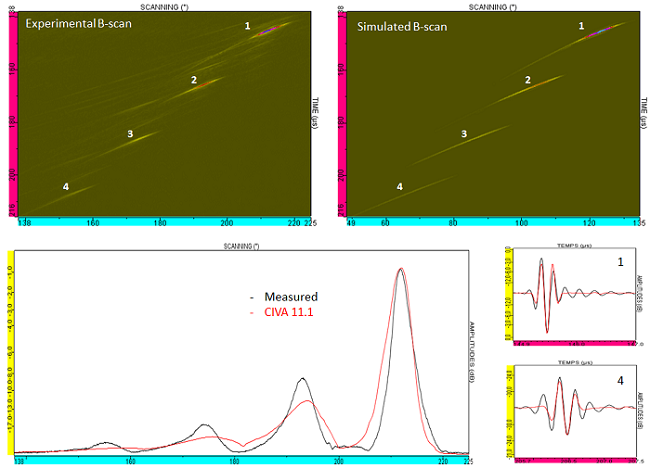
The figure below shows the experimental and simulated Bscans when the incidence angle of the transducer is 17°.
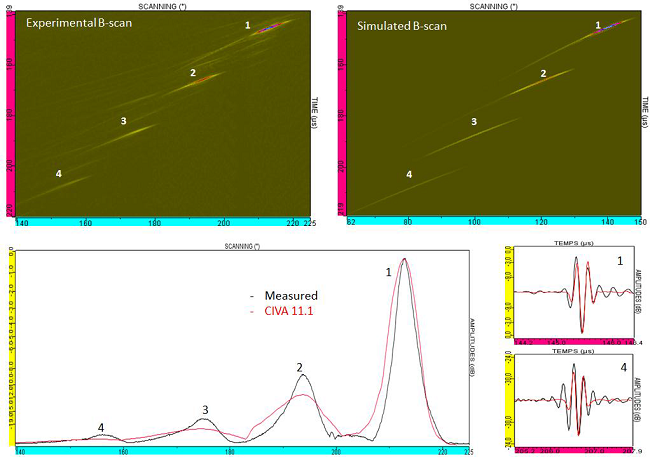
The figure below shows the experimental and simulated Bscans when the incidence angle of the transducer is 18°.
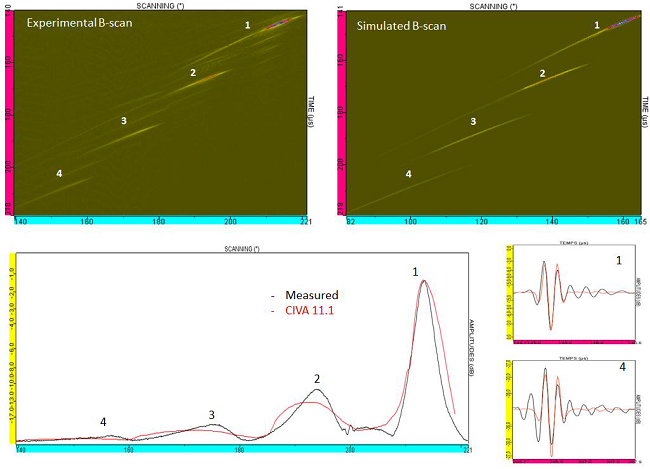
The figure below shows the experimental and simulated Bscans when the incidence angle of the transducer is 19°.
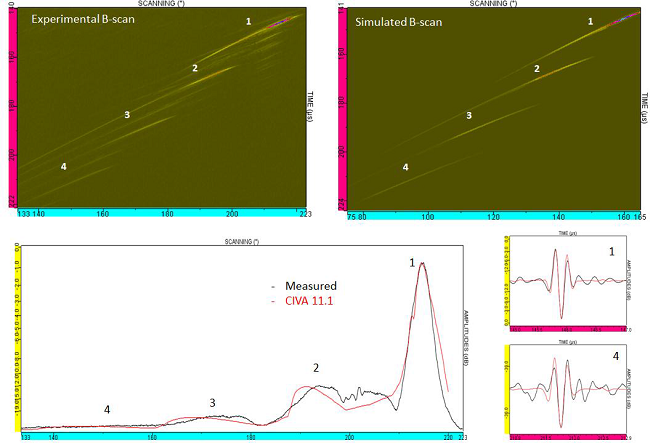
On these figures, the amplitudes are recalibrated relatively to the maximum amplitude of the first echo. The shift in time of flight applied when superimposing simulated and experimental Ascans is negligible (<0.5μs).
The comparison simulation/experiment of multiskip echoes shows differences. For all the incidence angles:
- It can be seen on the echodynamic curves that the shapes of simulated and experimental curves differ greatly. In addition, the simulated amplitudes decrease more rapidly with the number of skips that the measured amplitudes.
- A fairly good agreement between measured and simulated Ascans for the corner echo (echo n°1) is observed. Then, it is lost (see figures above).
Comparison of the amplitudes
The maximal amplitudes of multiskip echoes (referenced with the amplitude of the echo of a SDH located in the flat specimen at 6mm depth) are represented in function of the sound path in the specimen for respectively incidence angles of 16°, 17°, 18° and 19° (from left to right and from top to bottom).
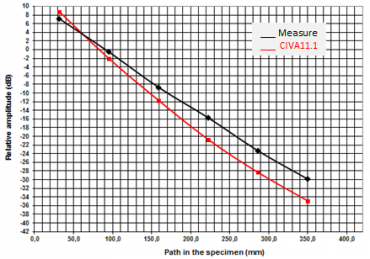
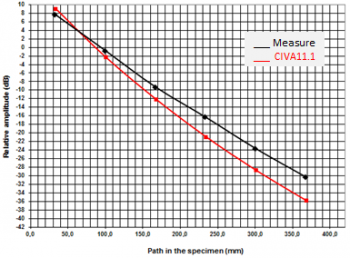
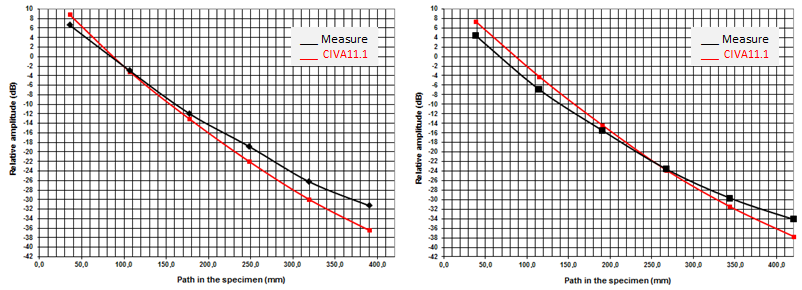
For the 4 incidence angles, the amplitude of the first multiskip echo (corner echo) is well predicted by CIVA but has a slightly smaller amplitude (2 dB) relatively to the experiment for incidence angles of 16°, 17° and 18°. The difference is 3dB for the incidence of 19°. There is also an underestimation of the simulated amplitudes of multiskip echoes. The difference increases with the sound path and can reach 4 to 5dB after 6 skips on the cylinder backwall.
Effect of the incidence angle on the multiskip echoes
The experimental multiskip echoes obtained with the 4 incidence angles are compared to each other and to the simulation results. Comparisons focused on the amplitudes, the echodynamic curves and on the Ascans of the corner echo.
CIVA predicts well the decrease of the echoes amplitude with the number of skips and confirms that it does not depend on the incidence angle when it is between 16° to 18° (the reference for these superimpositions is the amplitude of the corner echo at the incidence angle of 16 °). However, for the incidence of 19° CIVA does not predict the experimental decrease (3 to 4 dB) of the amplitude.
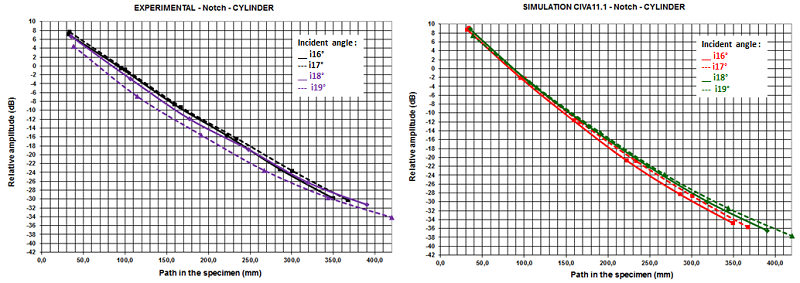
Superimpositions of experimental and simulated echodynamic curves (see figure below) show that the shape is poorly predicted by CIVA from the second multiskip echo. In addition, CIVA simulates a spreading of corner echo more important.
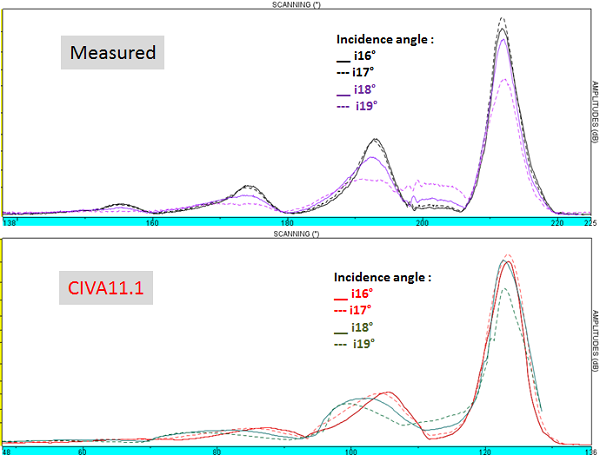
On the other hand, the superposition of Ascans shows poor prediction of the evolution of the signal shape with the incidence angle for the first corner echo.
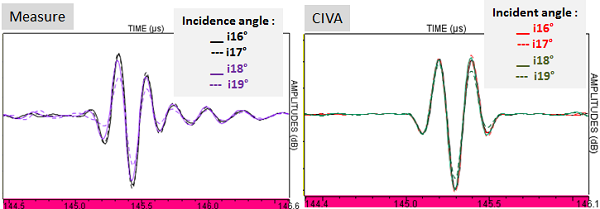
Effect of the curvature of the cylinder on the multiskip echoes
Figure below shows a comparison of the experimental and simulated decrease of the amplitude of multiskip echoes in the cylinder and the flat part.
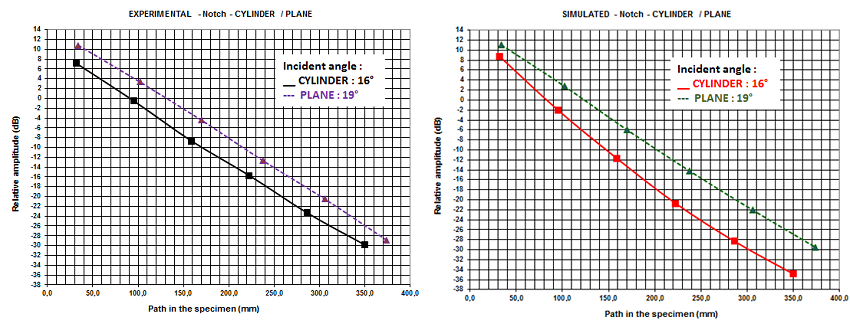
Experimentally, it can be observed that, due to the curvature of the cylinder, the amplitudes of the multiskip echoes in the cylinder are lower than those in the flat specimen. The decrease of the amplitude is the same for all multiskip echoes (constant offset between the curves in the planar and cylindrical part). However, this is not the case in simulation: the loss in amplitude of the first echo in the cylinder is well predicted but the decrease in amplitude with the number of skips increases instead of being constant.
Continue to Notch: interpretation of the comparison results
